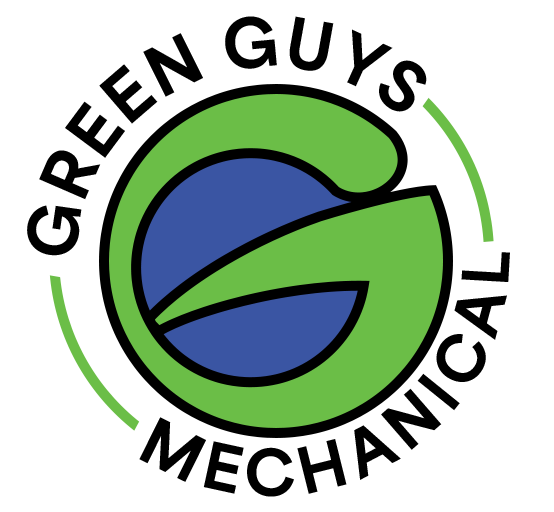Geothermal FAQ In Ontario, NY
Geothermal FAQ In Ontario, Webster, Fairport, Greater Rochester, NY and Surrounding Areas
Questions
How efficient is a GSHP?
The GSHP is one of the most efficient residential heating and cooling systems available today, with heating efficiencies 50 to 70% higher than other heating systems and cooling efficiencies 20 to 40% higher than available air conditioners. That directly translates into savings for you on your utility bills.
Can one system provide both space heating and cooling for my home?
And what about heating hot water? Yes. A GSHP can be a combination heating/cooling and hot water heating system. You can change from one mode to another with a simple flick on your indoor thermostat. Using a desuperheater, some GSHPs can save you up to 50% on your water-heating bill by preheating tank water.
How does a GSHP system heat water for my home?
Using what is called a desuperheater, GSHPs turn waste heat to the task of heating hot water. During the summer, when the system is in cooling mode, your hot water is produced free as a byproduct of the thermal process. In winter, with the heating mode, the desuperheater heats a portion of your hot water. Desuperheaters are standard on some units, optional on others. Stand-alone systems that will heat water all year around can be purchased.
How much space does a GSHP unit require?
Most of a GSHP installation is underground. Inside the house, the heat pump units are about the same size as a traditional heating and cooling unit.
How long will my GSHP system last?
GSHPs are durable and highly reliable. The GSHP contains fewer mechanical components, and all components are either buried in the ground or located inside the home, which protects them from outside conditions. The underground pipe carries up to a 50-year warranty.
How noisy is the GSHP unit?
GSHPs are very quiet, providing a pleasant environment inside & outside of the home. GSHPs have no noisy fan units to disturb outdoor activities, on or near the patio.
How safe are GSHPs?
GSHP systems are safe and protected. With no exposed equipment outdoors, children or pets cannot injure themselves or damage exterior units. GSHPs have no open flame, flammable fuel or potentially dangerous fuel storage tanks.
What about comfort?
A GSHP system moves warm air 90-105(F) throughout your home or business via standard ductwork. An even comfort level is created because the warm air is moved in slightly higher volumes and saturates the building with warmth more evenly. This helps even out hot or colds spots and eliminates the cold air blasts common with fossil fuel furnaces.
How effective is this underground system?
The buried pipe, or ground loop, is the most recent technical advancement in heat pump technology. Recently, new heat pump designs and improved buried pipe materials have been combined to make GSHP systems the most efficient heating and cooling systems available.
Are GSHP systems guaranteed?
Nearly all GSHP system manufacturers offer a warranty for major components that is equivalent to the warranties for conventional heating and cooling systems. Manufacturers of plastic pipe used for ground loops warrant their products for 50 years.
Can these systems be used for commercial, industrial, or apartment requirements?
Yes! Many GSHP systems are being installed using a multitude of systems hooked up to an array of buried vertical or horizontal loops. This simplifies zone control and internal load balancing.
What are the advantages to an HVAC dealer?
GSHP systems create a huge retrofit market not subject to wild fluctuations in housing construction. There is also ample opportunity for stable growth benefiting the dealer and his employees. In addition, these systems are relatively maintenance-free, requiring only regular filter changes. This means fewer maintenance and support calls. There is no outside equipment, so wear and tear is less.
Savings / Costs
How will I save money with a GSHP?
GSHPs save money, both in operating costs and maintenance costs. Investments can be recouped in as little as three years. There is a positive cash flow, since the energy savings usually exceeds payment on the system.Savings / Costs
How much does a GSHP cost?
The initial investment for a GSHP system is greater than that of a conventional system. However, when you consider the operating costs of geothermal heating, cooling, and water heating system, energy savings quickly offset the initial difference in the purchase price.
How would increase use of GSHP systems affect electricity cost and availability?
The reduced peak load requirements would allow utilities to serve more customers and to lower fixed costs per customer, thus offsetting some increase variable costs. This would result in less cost per kilowatt since fixed investment for new capacity is high.
Does my state offer any incentives for installing a GSHP system?
Some utilities offer rebates or incentives to their customers who purchase GSHPs. To see what your state has to offer click here.
Some manufacturers and companies have cost and/or savings calculators on their websites. Please see our Links page.
Are GSHP systems difficult to install?
Most units are easy to install, especially when they are replacing another forced-air system. This is known as a retrofit. GSHPs can be installed in areas unsuitable for fossil fuel furnaces because there is no combustion and thus no need to vent exhaust fumes. Ductwork must be installed in homes without an existing air distribution system. Your dealer or installer can assess the cost of installing ductwork.
Can I install a ground source heat exchanger myself?
It’s not recommended. Thermal fusion of the pipe, drilling and trenching are procedures best handled by licensed professionals. Nonprofessional installations may result in less than optimum performance, which could cancel out anticipated savings.
How far apart are trenches and vertical boreholes spaced?
Trenches are spaced four to five feet apart while boreholes are spaced ten to fifteen feet apart.
How long does it take to install a horizontal system?
This depends on soil conditions, length and depth of pipe, and equipment required. A typical installation can be completed in one or two days.
How long does it take to install a vertical system?
With the vertical installation, time varies with conditions on the site such as type and depth of the overburden, type and hardness of the bedrock, and the presence of aquifers. Typical drilling times are one or two days; total installation can usually be accomplished in two days.
What are the advantages and disadvantages of the horizontal and vertical installations, respectively?
Horizontal installations are simpler, requiring lower-cost equipment. However, they require longer lengths of pipe due to seasonal variations in soil temperature and moisture content. Since a horizontal heat exchanger is laid out in trenches, a larger area is usually required than for a vertical system. Where land is limited, vertical installations or a compact Slinky™ horizontal installation can be ideal. If regional soil conditions include extensive hard rock, a vertical installation may be the only available choice. Vertical installations tend to be more expensive due to the increased cost of drilling versus trenching, but since the heat exchanger is buried deeper than with a horizontal system, vertical systems are usually more efficient and can get by with less total pipe. Your GSHP contractor will be able to help you decide which configuration best meets your specific needs.
How can I be sure the pipe is installed properly?
Use a reputable contractor. Don’t be afraid to ask for and use references. Reputable dealers and loop installers will be happy to give names and phone numbers for you to call and confirm their capabilities. Find out where the installer received training, whether he or she is IGSHPA-accredited, and how many systems he or she has installed. Also, check with your utility company representative for names of installers. A list of IGSHPA-trained and accredited installers is available on our website.
Is it advisable to install a GSHP system large enough to handle my total heating needs?
GSHP systems are generally sized to meet all your cooling needs. Depending on heating needs, a GSHP system usually supplies 80-100 percent of your design heating load. Sizing the system to handle your entire heating needs may result in slightly lower heating costs, but the savings may not offset the added total of the larger system. Special consideration should be given to systems in the north where multiple capacity units should be considered to handle the large variation between heating and cooling loads. Your dealer/installer should provide a heating and cooling load calculation to guide your equipment selection.
Environment / Climate
How do GSHPs protect the environment?
GSHP systems conserve natural resources by providing climate control very efficiently-thus also lowering emissions. GSHPs also minimize ozone layer destruction by using factory-sealed refrigeration systems, which will seldom or never have to be recharged.Environment / Climate
What are the environmental benefits of GSHP systems?
Currently installed systems are making a huge difference in our environment! The systems are eliminating more than three million tons of carbon dioxide and is equivalent of taking 650,000 automobiles off the road. GSHP systems conserve energy and, because they move heat that already exists rather than burning something to create heat, they reduce the amount of toxic emissions in the atmosphere. They use renewable energy from the sun, and because the system doesn’t rely on outside air, it keeps the air inside of buildings cleaner and free from pollens, outdoor pollutants, mold spores, and other allergens.
Does this mean that in extremely cold climates additional heat sources are necessary?
All systems require an emergency back up. Heat pumps can provide all the heat necessary even in the coldest weather. An economic analysis by your contractor should dictate what portion of the heat should be provided by the heat pump and what portion by auxiliary means.
Concerning Your Home
Will my existing ductwork function with this system?
Yes, in most cases. Your dealer or installer will be able to determine ductwork requirements and if any minor modifications are needed.
Will an underground loop affect my lawn or landscape?
No. Research has shown that loops have no adverse effects on grass, trees, or shrubs. Most horizontal installations require trenches about six inches wide. Temporary bare areas can be restored with grass seed or sod. Vertical loops require little space and do not damage lawns significantly.
My yard contains many shade trees. Will this affect ground temperature and my ability to use it as an energy source?
Not at all. The system is installed deep enough that it utilizes constant ground temperature.
Can a GSHP system be added to my fossil fuel furnace?
Yes. Called dual systems, they can easily be added to existing furnaces for those wishing to have a dual-fuel heating system. Dual-fuel systems use the GSHP system as the main heating source, and a fossil fuel furnace as a supplement in extremely cold weather should additional heat be needed.
Will I have to add insulation to my home if I install one of these systems?
Ground source heat pump systems will reduce your heating and cooling costs regardless of how well your home is insulated. However, insulating and weatherizing are key factors in gaining the maximum amount of savings from any type of heating and cooling system.






